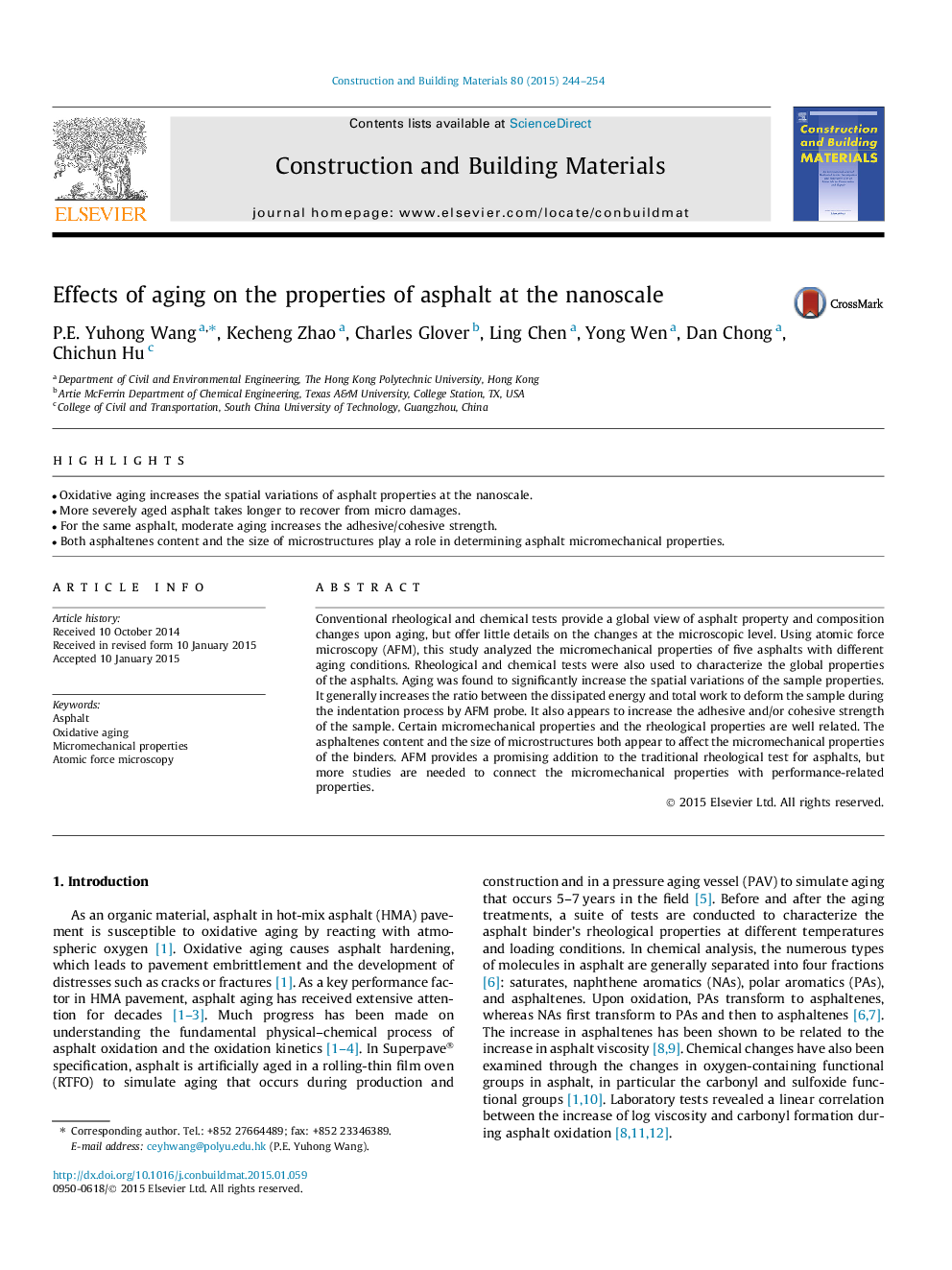| Article ID | Journal | Published Year | Pages | File Type |
|---|---|---|---|---|
| 6721317 | Construction and Building Materials | 2015 | 11 Pages |
Abstract
Conventional rheological and chemical tests provide a global view of asphalt property and composition changes upon aging, but offer little details on the changes at the microscopic level. Using atomic force microscopy (AFM), this study analyzed the micromechanical properties of five asphalts with different aging conditions. Rheological and chemical tests were also used to characterize the global properties of the asphalts. Aging was found to significantly increase the spatial variations of the sample properties. It generally increases the ratio between the dissipated energy and total work to deform the sample during the indentation process by AFM probe. It also appears to increase the adhesive and/or cohesive strength of the sample. Certain micromechanical properties and the rheological properties are well related. The asphaltenes content and the size of microstructures both appear to affect the micromechanical properties of the binders. AFM provides a promising addition to the traditional rheological test for asphalts, but more studies are needed to connect the micromechanical properties with performance-related properties.
Related Topics
Physical Sciences and Engineering
Engineering
Civil and Structural Engineering
Authors
P.E. Yuhong Wang, Kecheng Zhao, Charles Glover, Ling Chen, Yong Wen, Dan Chong, Chichun Hu,
